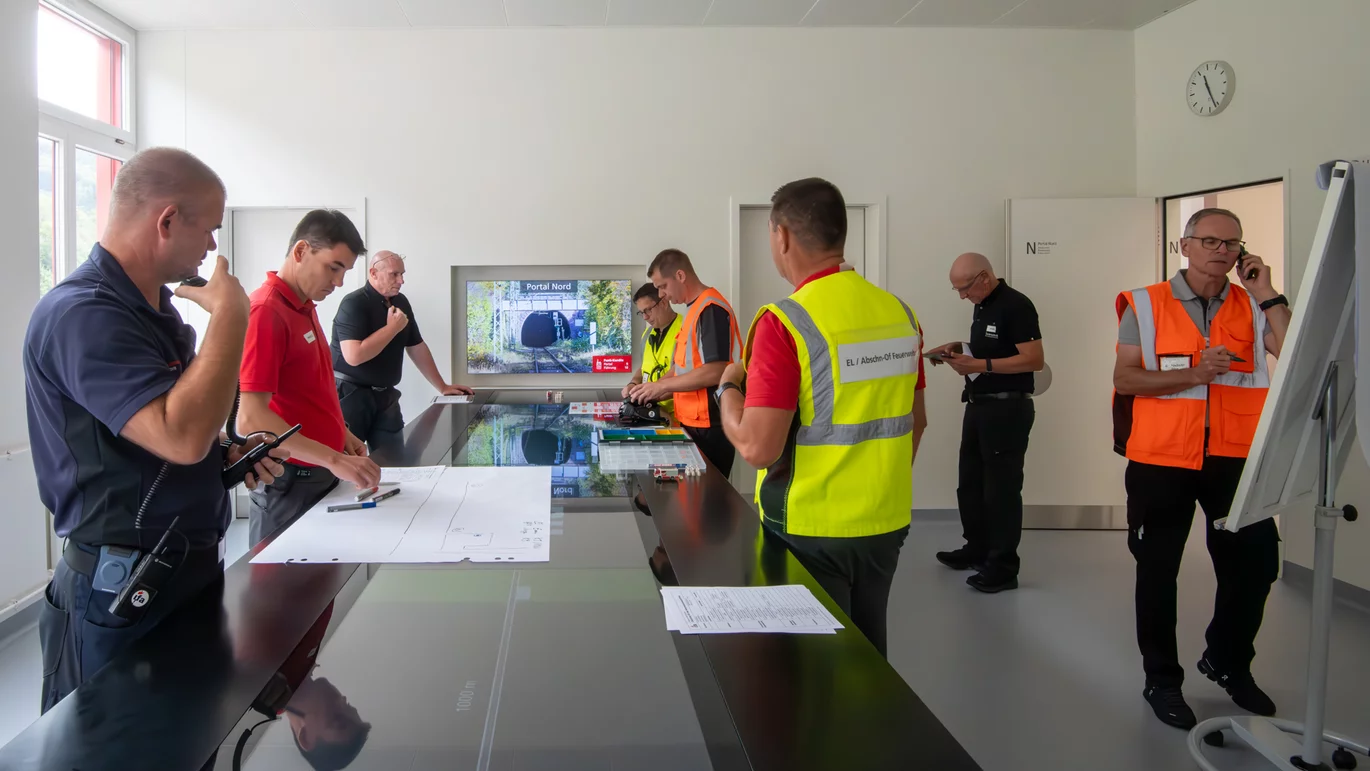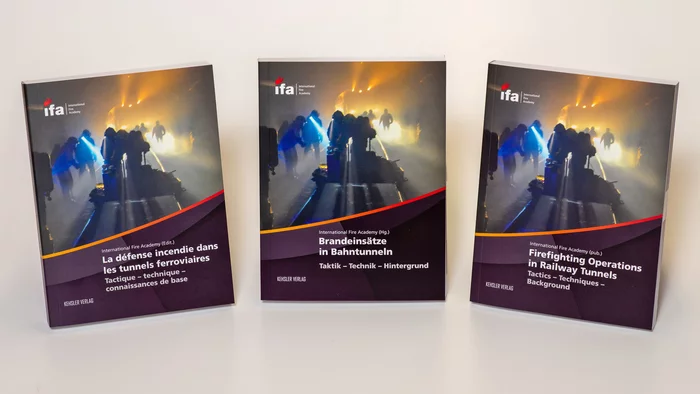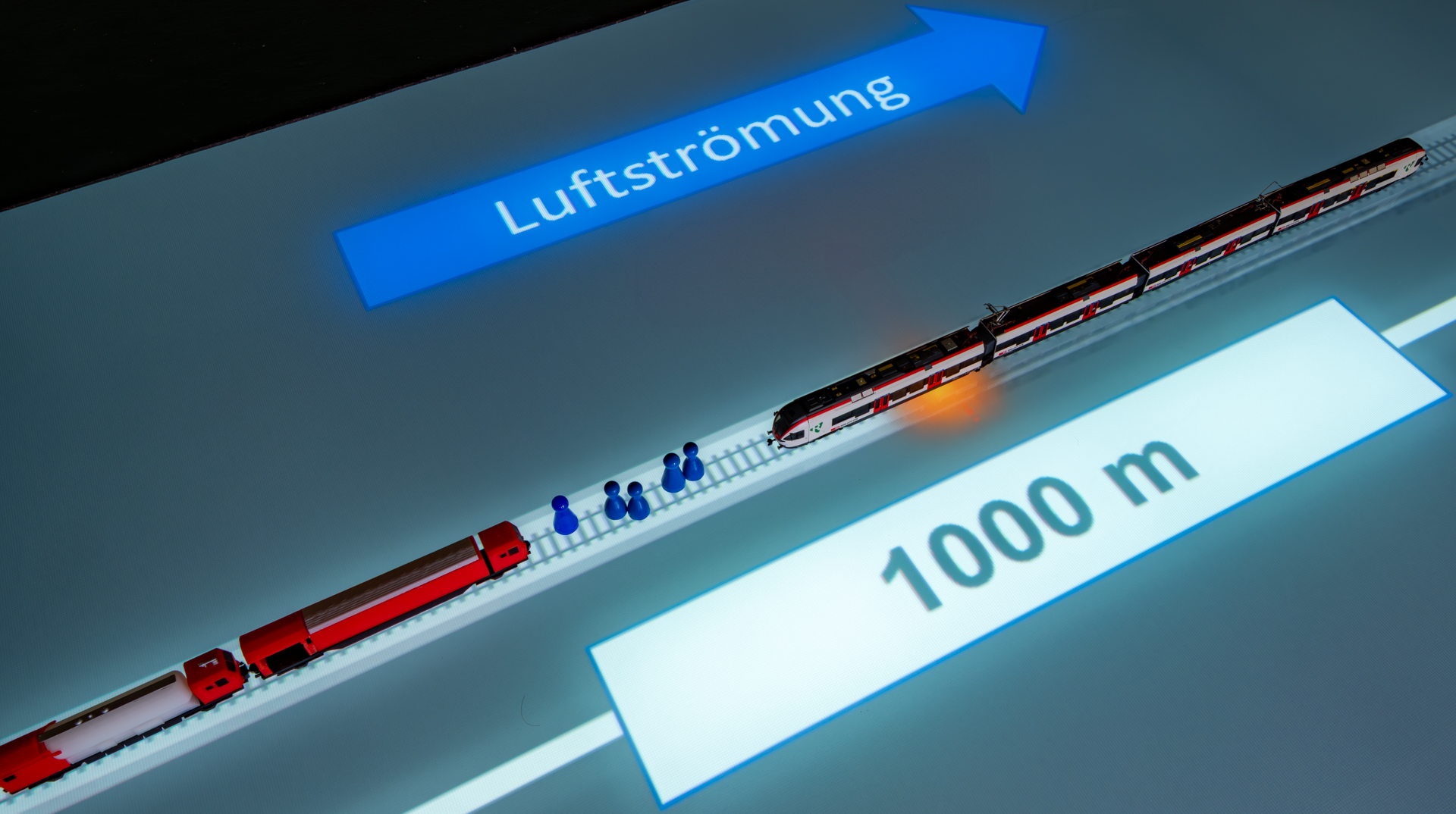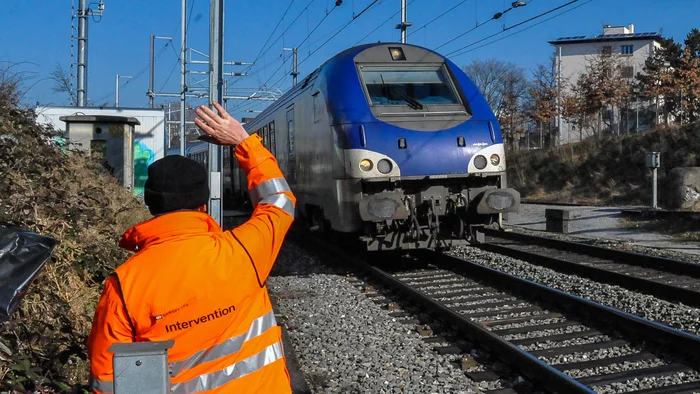A great deal of information is required to manage operations in railway tunnels. Our Didactics and Development Team has developed a checklist for such deployments to support the procurement of information. The checklist has been successfully tested in tacticle railway courses and can be downloaded free of charge from the «Knowledge» section of our website. In this magazine article, we explain the structure of the checklist and provide tips on how to use it.
Practice-orientated structure of the checklist
The checklist for procuring information is divided into five sections:
- Infrastructure
- Hazards
- Required penetration depth
- Rescue effort
- Resources
For each section, the information to be obtained is listed as bullet points; the information can also be entered for both portals.
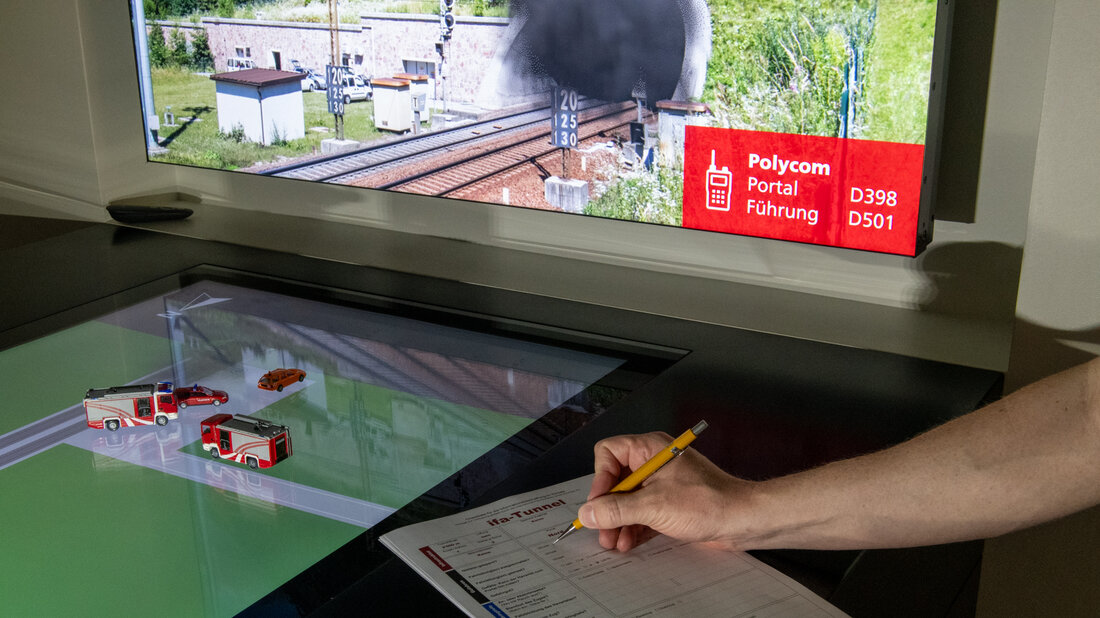
Infrastructure and hazards
In the infrastructure section, the name and technical data of the tunnel, as well as essential contacts or links, for example, to representatives of the infrastructure manager and partner organisations, are entered during the operational planning.
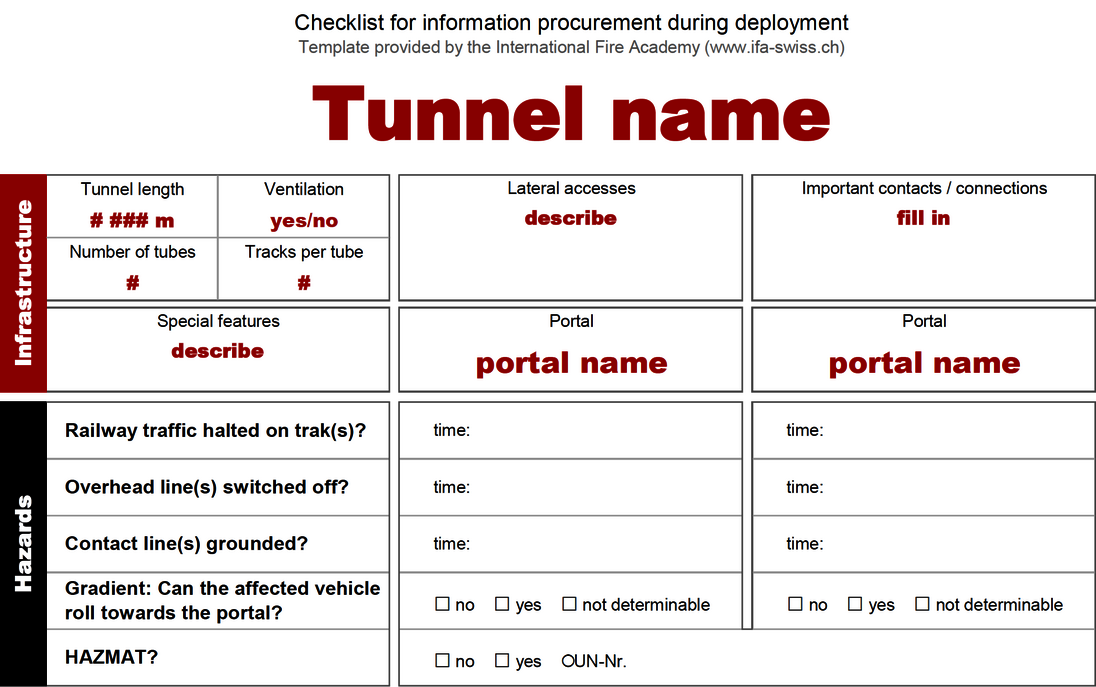
A checklist is maintained at every portal, in which both the information on your own portal and, in part, that of the «other side» is recorded. The information from the other portal is requested by radio or telephone. It is the only way to ensure, for example, that the railway traffic is discontinued and that the overhead lines are powered down and grounded on both sides. Only then may the tunnel be entered. The gradient in the tunnel is already determined as part of the preparational operation planning; during the operation, however, depending on the position of the incident vehicle, it must be determined whether it could start to move due to the gradient or whether leaking liquids could flow towards the emergency services. Information on potentially hazardous materials can only be obtained as the operation progresses.
Required penetration depths
The upstream and downstream sides can be recognised by the side on which smoke emerges and the side on which it does not. To this end, the tactical commands on both sides exchange their observations. The required penetration depths, in other words, the distances from the portals or lateral access to the respective incident site, are determined by the location of the incident train. It should be kept in mind that trains can currently be up to 740 metres long.

Suppose the last wagon of a freight train is on fire. Then, the penetration depth is initially the distance to the affected train. Depending on the direction in which the train was travelling, the firefighters may either reach the burning freight wagon or, otherwise, the locomotive of the train first. The route to the fire can then be up to 740 metres longer. Knowing the direction of travel of the freight train at an early stage is also of interest because it makes it easier to locate the driver, who is probably in or near the locomotive. The driver may need help or, in the best case, can provide further information and support in dealing with the incident.
Rescue effort and resources
The rescue effort is a decisive factor in determining the further operational measures and the required personnel and resources. It is determined based on information about the type of train, the number of people affected, and whether other trains are in the tunnel.
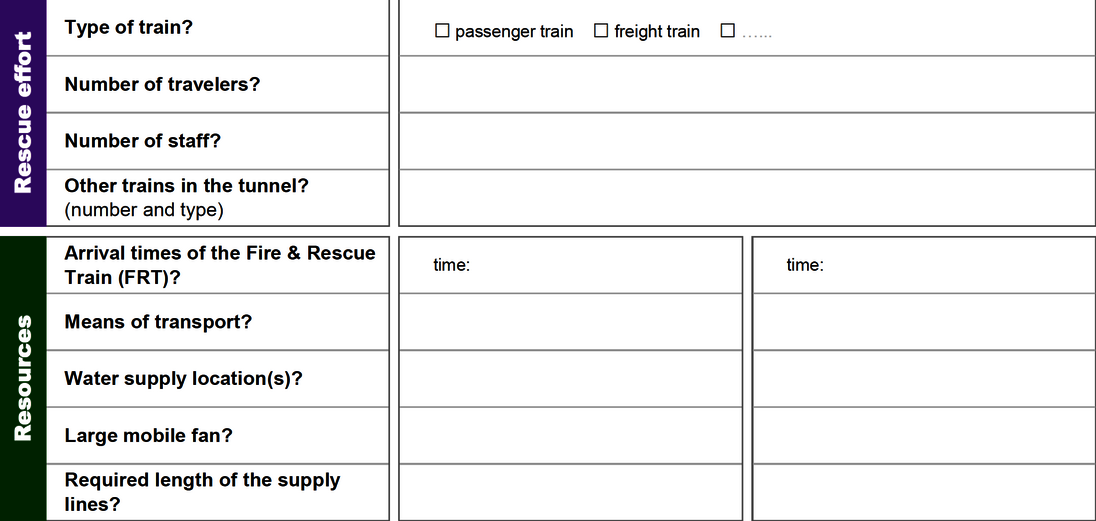
In some cases, information about the resources that can be used is already available before deployment, for example, about water supply locations or means of transport. Like the tunnel data, these should already be entered into the checklist as part of the operational planning. The estimated arrival time of a fire and rescue train must be requested from the infrastructure manager during the operation. If no deployment of a fire and rescue train is planned, other resources, such as a road-rail vehicle, can be entered as part of the operational planning.
Customise the checklist to your own tunnel
The railway checklist was created as an Excel spreadsheet. It can be downloaded from the «Knowledge» section and pre-filled with the technical data of the respective tunnel system and details of the available resources as part of operational planning. The list can also be customised to local requirements. We recommend testing the correspondingly edited list during training drills and then printing it out for use in operations.



